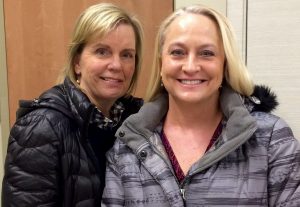Park City Community Foundation held its most recent Board Member Roundtable on Thursday, February 22nd. We host regular Roundtables to help build skills and connections among the local nonprofit community – program staff, development staff, executive directors, board members, and others. The Board Member Roundtables center on the role of the board in the success and accountability of their organization.

The Board Member Roundtable focused on “Improving Your Board’s Diversity.” This topic is particularly relevant in the context of a growing conversation about social equity in Park City. These conversations are defining who we want to be as a community. The disparities that exist in our own backyard are by no means impossible to address. Together, we are establishing a framework for the work that will need to take place for us to have a complete community, where all groups come together organically.
In case you weren’t able to attend and would like to catch up, our nonprofit education facilitator, Maddy Shear, has put together a recap and a list of action items. Check out the list below.
What will you do?
- Decide to own this and hold yourself accountable.
- Begin. Do some research, start here with an excellent article from the James Irvine Foundation.
- Talk with your executive director and together develop a strategy for bringing the conversation to your board. Help your board understand the benefits of board diversity and the barriers that may exist in your current structure and recruiting process. Accept and understand that as with any initiative, it takes work, intentionality, staying positive. Acknowledge that what gets measured gets done, and as always there is no silver bullet.
- Do a gap analysis. When defining the parameters for your matrix don’t think too narrowly — skills, relevance, authenticity, cultural competency, broader perspective, and building leadership from the community you serve.
- Does your financial “give-or-get” requirement of board members prevent representatives of the community you serve from joining your board? Consider restating the requirement as each person giving a significantly meaningful gift for them, or as a commitment to including the organization in the board member’s top three for their annual giving.
- Brainstorm how you will reach out beyond your board’s typical network. Go where the community is that you hope to attract to your board. Begin to build trust and relationships just like you do with donors and volunteers.
- Create a job description that can be posted.
We believe that social sector organizations are better able to work effectively and with authenticity when they are led by boards that are intentionally diverse, inclusive, and focused on equity. It’s up to all of us to make this happen for our own organizations.